Abstract
Polsinelli, M. (University of Pavia, Pavia, Italy), and Maria Beretta. Genetic recombination in crosses between Streptomyces aureofaciens and Streptomyces rimosus. J. Bacteriol. 91:63–68. 1966.—Biochemical mutants were obtained from Streptomyces rimosus and S. aureofaciens by ultraviolet irradiation. Crosses were performed between auxotrophic strains of S. rimosus and S. aureofaciens with positive results. Data are reported which indicate that the interaction observed in some crosses is due to gene recombination.
Full text
PDF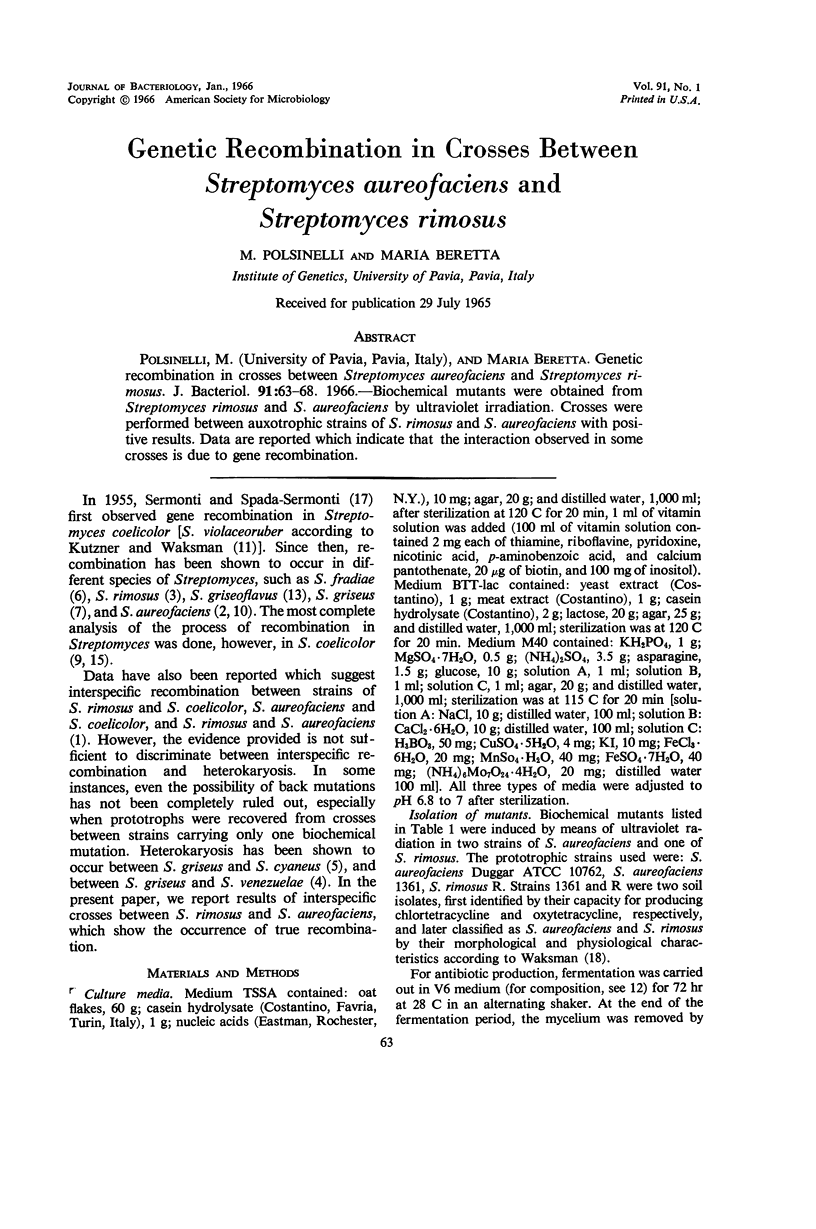
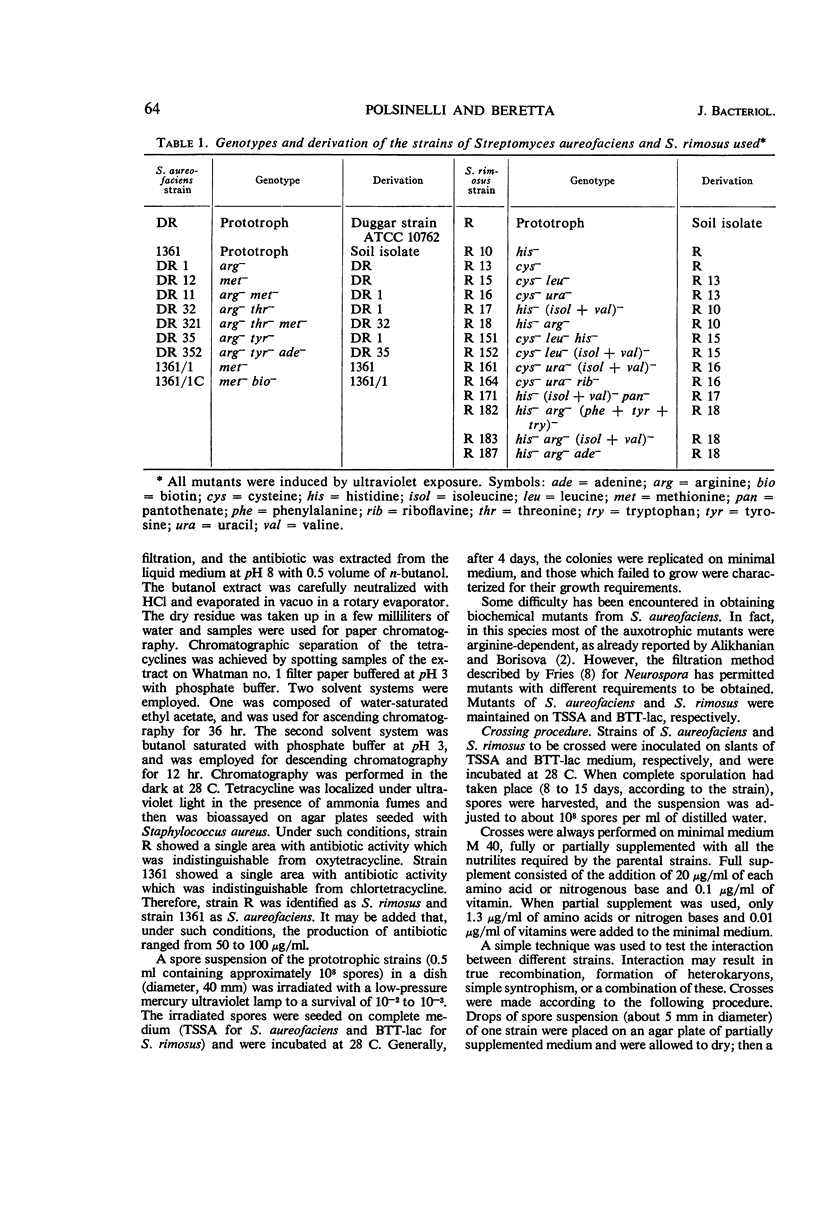
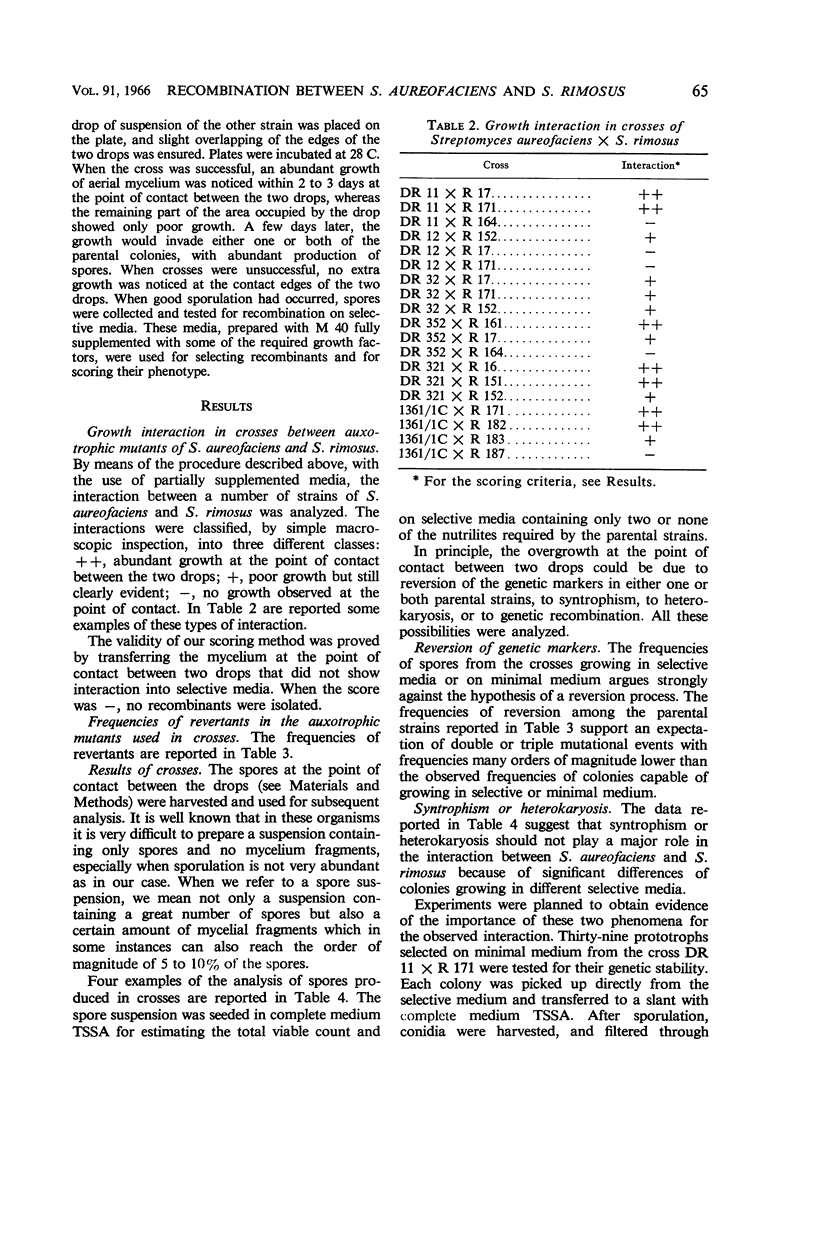
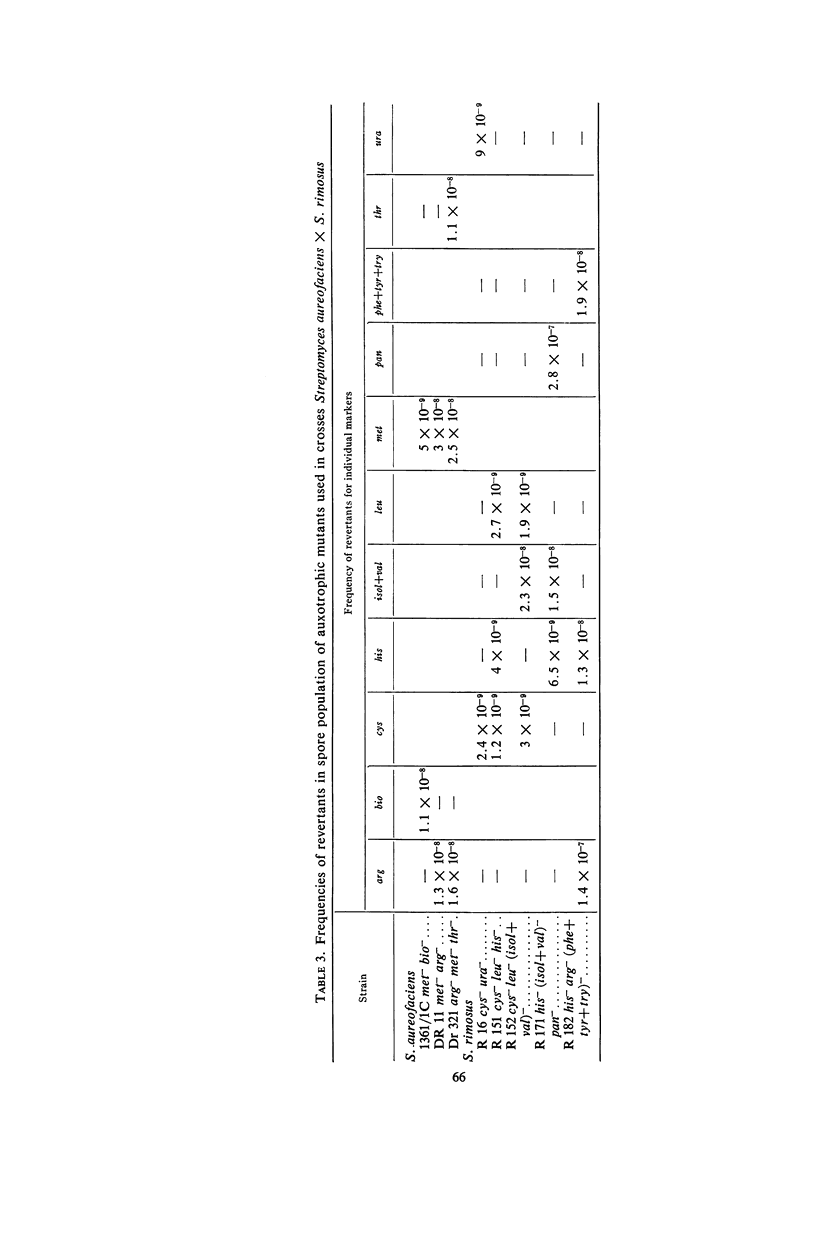
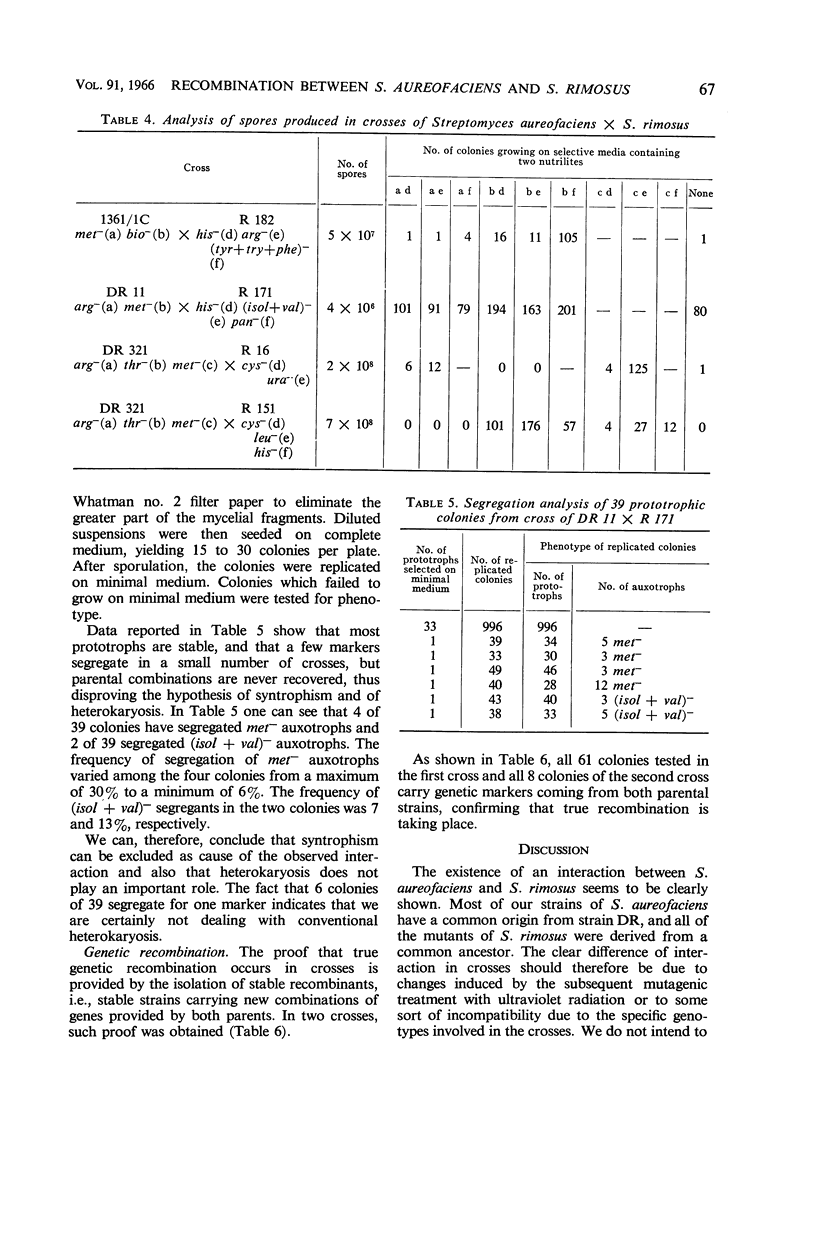
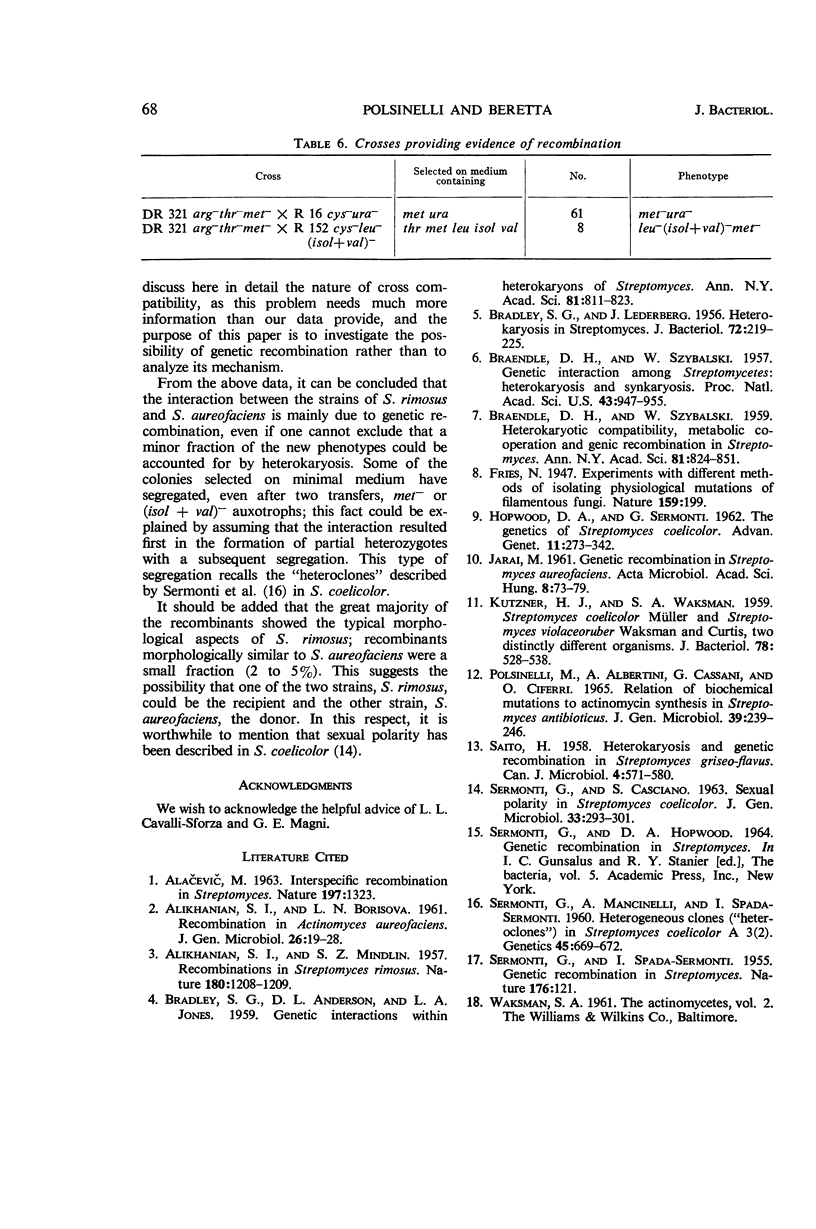
Selected References
These references are in PubMed. This may not be the complete list of references from this article.
- ALACEVIC M. Interspecific recombination in Streptomyces. Nature. 1963 Mar 30;197:1323–1323. doi: 10.1038/1971323a0. [DOI] [PubMed] [Google Scholar]
- ALIKHANIAN S. I., BORISOVA L. N. Recombination in Actinomyces aureofaciens. J Gen Microbiol. 1961 Sep;26:19–28. doi: 10.1099/00221287-26-1-19. [DOI] [PubMed] [Google Scholar]
- ALIKHANIAN S. I., MINDLIN S. Z. Recombinations in Streptomyces rimosus. Nature. 1957 Nov 30;180(4596):1208–1209. doi: 10.1038/1801208a0. [DOI] [PubMed] [Google Scholar]
- BRADLEY S. G., ANDERSON D. L., JONES L. A. Genetic interactions within heterokaryons of streptomycetes. Ann N Y Acad Sci. 1959 Sep 30;81:811–823. doi: 10.1111/j.1749-6632.1959.tb49367.x. [DOI] [PubMed] [Google Scholar]
- BRADLEY S. G., LEDERBERG J. Heterokaryosis in Streptomyces. J Bacteriol. 1956 Aug;72(2):219–225. doi: 10.1128/jb.72.2.219-225.1956. [DOI] [PMC free article] [PubMed] [Google Scholar]
- BRAENDLE D. H., SZYBALSKI W. Heterokaryotic compatibility, metabolic cooperation, and genic recombination in Streptomyces. Ann N Y Acad Sci. 1959 Sep 30;81:824–853. doi: 10.1111/j.1749-6632.1959.tb49369.x. [DOI] [PubMed] [Google Scholar]
- Braendle D. H., Szybalski W. GENETIC INTERACTION AMONG STREPTOMYCETES: HETEROKARYOSIS AND SYNKARYOSIS. Proc Natl Acad Sci U S A. 1957 Nov 15;43(11):947–955. doi: 10.1073/pnas.43.11.947. [DOI] [PMC free article] [PubMed] [Google Scholar]
- JARAI M. Genetic recombination in Streptomyces aureofaciens. Acta Microbiol Acad Sci Hung. 1961;8:73–79. [PubMed] [Google Scholar]
- KUTZNER H. J., WAKSMAN S. A. Streptomyces coelicolor Mueller and Streptomyces violaceoruber Waksman and Curtis, two distinctly different organisms. J Bacteriol. 1959 Oct;78:528–538. doi: 10.1128/jb.78.4.528-538.1959. [DOI] [PMC free article] [PubMed] [Google Scholar]
- POLSINELLI M., ALBERTINI A., CASSANI G., CIFERRI O. RELATION OF BIOCHEMICAL MUTATIONS TO ACTINOMYCIN SYNTHESIS IN STREPTOMYCES ANTIBIOTICUS. J Gen Microbiol. 1965 May;39:239–246. doi: 10.1099/00221287-39-2-239. [DOI] [PubMed] [Google Scholar]
- SAITO H. Heterocaryosis and genetic recombination in Streptomyces griseoflavus. Can J Microbiol. 1958 Dec;4(6):571–580. doi: 10.1139/m58-064. [DOI] [PubMed] [Google Scholar]
- SERMONTI G., CASCIANO S. SEXUAL POLARITY IN STREPTOMYCES COELICOLOR. J Gen Microbiol. 1963 Nov;33:293–301. doi: 10.1099/00221287-33-2-293. [DOI] [PubMed] [Google Scholar]
- SERMONTI G., SPADA-SERMONTI I. Genetic recombination in Streptomyces. Nature. 1955 Jul 16;176(4472):121–121. doi: 10.1038/176121a0. [DOI] [PubMed] [Google Scholar]
- Sermonti G, Mancinelli A, Spada-Sermonti I. Heterogeneous Clones ("Heteroclones") in Streptomyces Coelicolor a 3(2). Genetics. 1960 Jun;45(6):669–672. doi: 10.1093/genetics/45.6.669. [DOI] [PMC free article] [PubMed] [Google Scholar]


